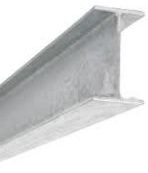Corrosion Protection – Galvanizing
Mild steel is used a lot in construction as it is a, relatively inexpensive, strong structural material.
It does however have an issue in that it can be susceptible to corrosion in certain locations such as:
- Buried in the ground. (for example retaining walls)
- Subject to regular wetting. (roofing sheets)
- High humidity locations. ( for example above heated pools and spas)
- Salty atmosphere. (such as near the sea)
One way of protecting the steel is galvanising, which is the application of a layer of zinc over the steel.
Here are the galvanising options you may be offered:
Hot Dip Galvanising
 With this process the prepared section of steel is dipped into a bath of molten zinc.
With this process the prepared section of steel is dipped into a bath of molten zinc.
When the section is removed a fairly thick layer of zinc encases the steel providing a durable corrosion resistant layer.
The appearance is of a dull grey material with a crystalline look.
Electro Galvanising
This is an electoplating process where a layer of zinc is bonded to the steel.
The item is dipped in a saline zinc solution and an electrical current is passed through the solution into the steel.
Although it results in a thinner layer of zinc, than hot dipping, the bond between the zinc and the steel is stronger so the effectiveness is comparable.
Cold Galvanising
Cold galvanising is the application of a zinc rich paint to the steel.
Although not as effective as true galvanising it is a better solution than paint alone.
One of the main uses is to provide complete zinc cover after site cutting, drilling, or welding of galvanised products.
Warning
Welding of galvanised steel is hazardous as the welding process releases toxic fumes. . . not a DIY exercise!